James S. Morley was not a blood relative, but he was very important to my family’s history. He and his wife, Jennie, raised my Grandma Grace as their adoptive daughter from the time she was orphaned at about age four, hence the somewhat tenuous collateral relationship.
James Selby Morley died on the 6 Jun 1900 in Andover, Ohio, after a full life as a successful entrepreneur and public official. Jennie, his widow, continued living in the Morley House, a large Victorian home on West Main Street in Andover. Grandma Grace inherited it sometime after Jennie passed away in 1927.
Grace provided a home for my father and mother, Walfrid and Mary Jane Huskonen, after they got married in 1934, and I was living there when the 1940 Census was enumerated.
Today, I found a biographical report on James in Biographical History of Northeastern Ohio, Embracing the Counties of Ashtabula, Geauga, and Lake, published in 1893 by The Lewis Publishing Co., Chicago. Here is his bio:
J. S. MORLEY, an old settler and the first Mayor of Andover, Ohio, was born in Leicester, Worcester county, Massachusetts, July 3, 1827. His grandfather, Walter Morley, was a member of one of the oldest and best known families of the Bay State. W. H. Morley, father of the subject of this sketch, was born in West Springfield, Massachusetts, and married Sybil Watson, a native of the same State and daughter of Robert Watson, born in Leicester, that commonwealth.
In 1834 the father of the subject of this sketch joined the westward emigration, coming overland by team to Ohio and settling in Andover. He was a warm friend of B. F. Wade, who came from the same neighborhood in Massachusetts. W. H. Morley was a blacksmith by trade, but later became a prominent merchant, and for many years did a thriving business in partnership with his oldest son, the subject of this sketch, under the firm name of W. H. & J. S. Morley.
Originally a Whig and later a Republican in politics, he was a leader in public affairs, serving for a number of years as Justice of the Peace. He was a Colonel in the State militia for a long time, and in various ways figured prominently in the early history of the county. He was the father of five children: J. S., of this notice; C. H.; Mary E., wife of B. Manley; E. W., and B. D. The devoted father died at the age of seventy-two, his loss being universally mourned as a public calamity.
The subject of this sketch was seven years of age when his parents came to Andover, where he was reared and educated and has since resided. He completed his education at Kingsville Academy and at Conneaut, Ohio, after which he was engaged in teaching for a short time, eventually embarking in the mercantile business, which he followed successfully for twenty-five years. He was for a time engaged in trade in Penn Line, Pennsylvania, after which he was a partner in a cheese factory for a number of years, since which time his efforts have been confined to Andover, where he has been a leader in business, materially contributing by his energetic and honorable methods to the advancement of his town and county. He is interested with his brother, B. D., in the ownership of Morley Block, and owns other valuable property, and is recognized as one of the most substantial men of the county. J. S. and B. D. Morley were engaged in the mercantile business for more than twenty years.
He was married at the age of twenty-two, in Penn Line, Pennsylvania, to Maria Dewey, a worthy lady, who was born, reared and educated in the Keystone State. They have had two daughters, one of whom, Addie, died in Penn Line; the other, Maggie B., is the wife of J. B. Tichenor, of Clyde, Ohio.
Mr. Morley is a wheel-horse of the Republican party, and has been elected by an admiring constituency to a number of official positions. He was the first Mayor of the town, served efficiently as Township Clerk and has been Postmaster of Andover for many years, being the most popular official in that capacity that the town has ever had. Fraternally he is a member of the local lodge No. 728, I. 0. 0. F. He is one of the most active temperance workers in the county and a generous contributor to all objects tending to advance the interests of his community, of which he is a representative citizen.
It is worthy of note that Mr. Morley was the proprietor and publisher of the first paper published in Andover. This was the Enterprise, au eight-column folio weekly. The first number was issued in December, 1872, and its publication continued until January, 1874, when the press and general printing outfit were sold and replaced by a new and better plant. The last number of the Enterprise was issued in June, 1875, when the entire plant and business were sold to parties at Sand Lake, Pennsylvania. Mr. Morley acted as Postmaster of Andover for more than a score of years.
Curiously, the bio doesn’t specifically mention that James and Maria were divorced by 1880, according to the 1880 Census. In fact, ex-wife Maria was living with their daughter Maggie in Clyde, Ohio, according to the 1880 Census. It also doesn’t mention that James eventually married Sarah Jane “Jennie” Perkins (born Howlett), the widow of James Perkins, before Grandma Grace came to live with them in the early 1880’s. I haven’t been able to find a divorce record for James and Maria, nor a marriage record for James and Jennie.
Here are my earlier posts about the Morley family:
Life and Times of Jennie Morley
William Henry Morley, Moving from Massachusetts to Andover, Ohio William Henry “W. H.” was the father of James–see the first paragraph at the top of the bio above.
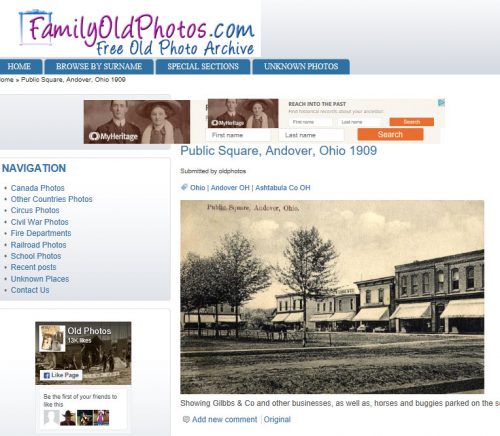
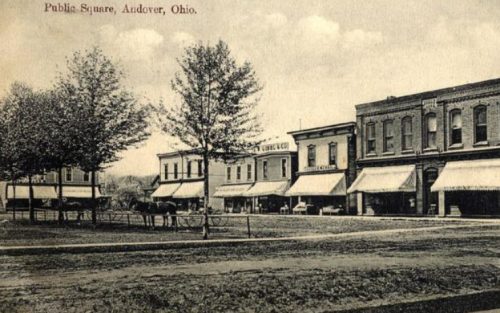
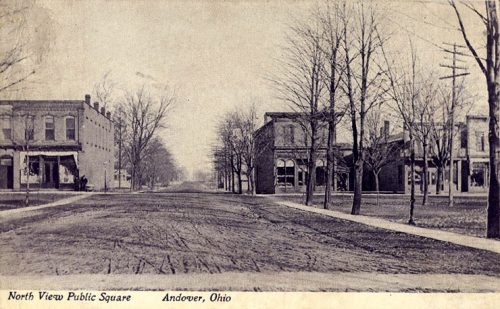
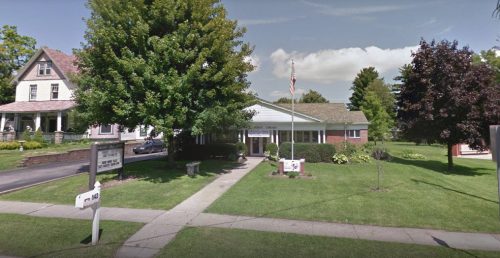 Andover Public Library at 142 West Main St., Andover, Ohio. Image from Google Maps.
Andover Public Library at 142 West Main St., Andover, Ohio. Image from Google Maps.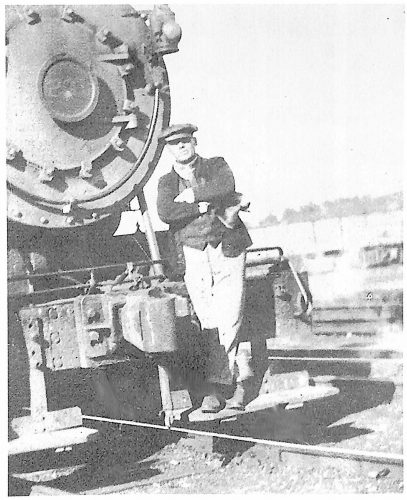
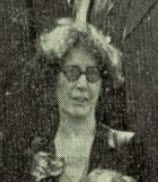
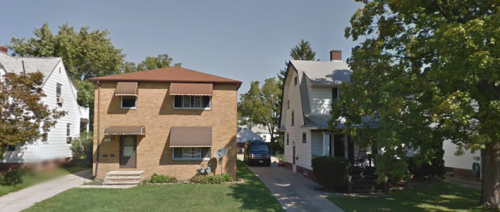

Recent Comments